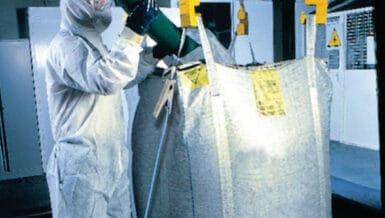These vapours can come from leaks in tanks, casks and equipment such as transfer pumps, pipes and flexible hoses.
Although this article focuses on distillery environments, the use of ethanol extends beyond the production of alcoholic beverages. Ethanol is found in numerous consumer products; paints, varnishes, inks, and biofuels to name but a few. It’ll come as no surprise that between 2000 and 2010, the number of ethanol manufacturing facilities in the US nearly quadrupled, with the coronavirus outbreak even seeing over 800 distilleries in the US alone producing hand sanitizer to aid the fight of COVID-19.
A vapour explosion can occur if enough vapours are released in an enclosed space with an ignition source, such as static electricity. The processes that go into producing bourbon whiskey appear simple, but they can produce an infinitely complex and subtle drink.














































